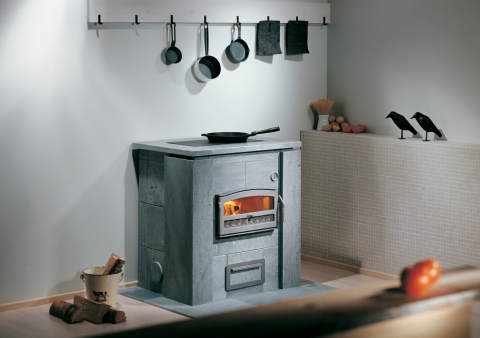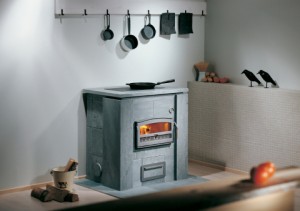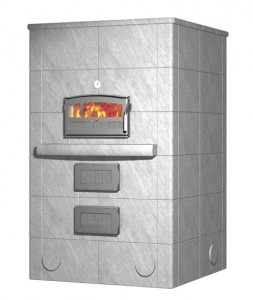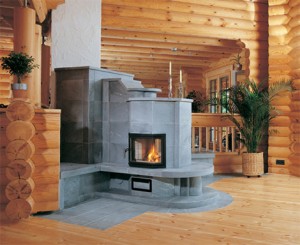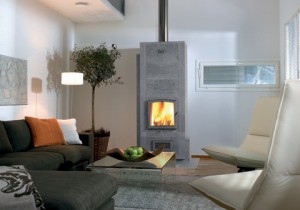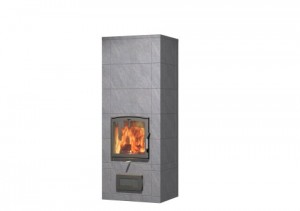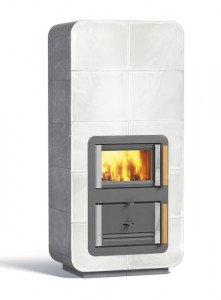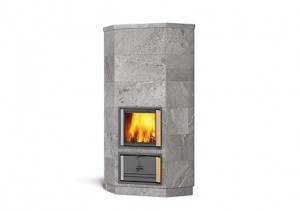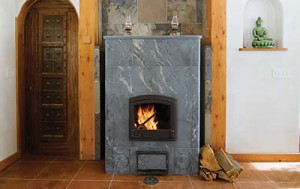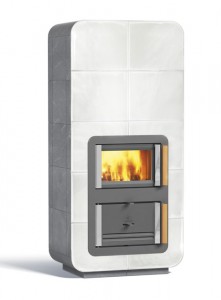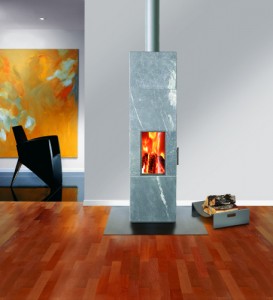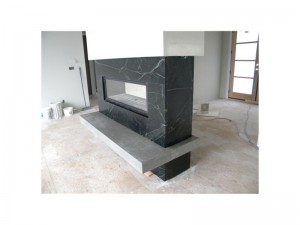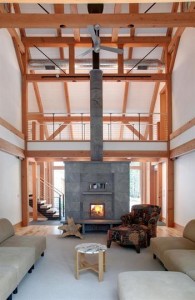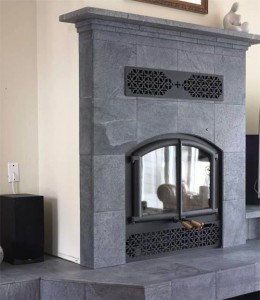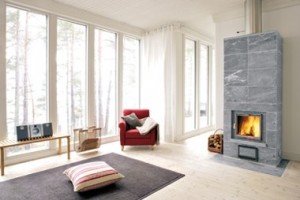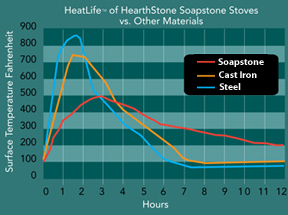Soapstone is a natural material – metamorphic rock – formed millions of years ago under intense heat and pressure. Because it started out in a molten state deep within the earth, and because it has an unusually stable composition, soapstone can comfortably withstand fire and dramatic changes in temperature.
For centuries, soapstone has been known for its ability to retain heat. Other natural stones, such as granite and marble, also hold and radiate heat, but only soapstone has the added benefit of being able to withstand direct flames indefinitely. Because of this, the firebox of a soapstone stove is actually constructed of stone, which lasts longer than the steel, cast iron or refractory bricks used in other types of stoves. Several thick pieces of stone comprise the top, sides and back of the stove. Each slab of soapstone forms both the interior and exterior wall of the stove. Inside, the stone directly absorbs the high heat of the fire, while outside, it radiates heat into the room from its polished surface.
Once heated, soapstone stays warm for hours, making it the ideal material for overnight heating or for other long stretches of time when you can’t tend the fire. And stone endures, so you can save money on materials over the long run.
The heat quality of stone is gentle, even and comfortable; you can sit close to a soapstone stove without getting the uncomfortable blast of heat you would feel from steel. The surface temperature is also less hot, which is a safety advantage, particularly for homes with young children.
Soapstone also has attractive veining and other naturally created patterns, which are one-of-a-kind decorative elements. When it is exposed to high temperatures, its rich colors can actually deepen over time.
HearthStone soapstone stoves use a combination of materials to maximize the benefits of each. For instance, soapstone plus cast iron gives you the immediate radiant heat of cast iron, something to curl up to, while the natural stone slowly releases its gentle, stored heat over time.

